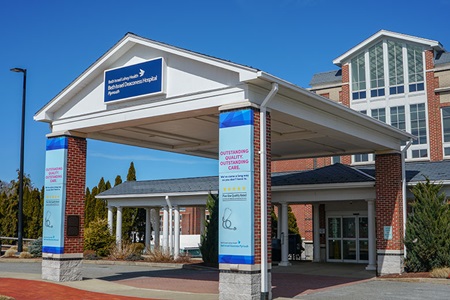When Should You Go to the Emergency Room?
Know Your Options for Getting the Right Care at the Right Place
You may have heard that hospitals are busier than ever. You’ve just slipped in your driveway and think you may have sprained or broken your ankle. You need to see a doctor. But where? Should you go to the nearest emergency room, or to urgent care? Should you call your primary care physician?
“If you are experiencing potentially life-threatening symptoms, go to the emergency room or call 911,” recommends Tenny Thomas, MD, chief medical officer of Beth Israel Deaconess Hospital–Plymouth (BID Plymouth). “For non-urgent or non-life-threatening symptoms, visiting your primary care physician or going to an urgent care center may be a better option.”
When To Contact Your Primary Care Physician
Primary care physicians know their patients and their patients’ medical history best. They can diagnose and treat non-urgent conditions such as minor infections, headaches, muscle pains, minor scrapes and bruises.
“Primary care providers also help manage a patient’s chronic disease and are a valuable resource for patients in helping them to effectively manage their care,” said Charbel Abou Rjeily, MD, chief of medicine BID Plymouth. “For some conditions, telehealth may also be an option, allowing the patient to have an appointment with their provider in the comfort of their own home.”
Examples of care available through primary care:
- Cold, flu and sore throat
- Ear, sinus or urinary tract infection
- Headaches and muscle pains
- Stomach pains, nausea, diarrhea, or constipation
- Minor scrapes or bruises
- Managing chronic diseases, such as diabetes and high blood pressure
To find a Beth Israel Lahey Health (BILH) primary care physician near you, please visit the BILH Find a Doctor page.
When To Go to the Urgent Care Center
For non-emergent injuries that are beyond the scope of primary care but don’t rise to the level of emergency care, urgent care centers are also an option. Urgent care centers can perform a multitude of tests – with some locations offering X-rays and lab services, and some centers offering IV fluids for dehydration or IV antibiotics for an infection. Additionally, visiting an urgent care center can save you time and money.
“Our emergency room is very full right now with patients – some of whom delayed seeking care due to COVID, and the high number of patients have in part caused wait times to increase. As we work hard to care for each patient who comes in, there may be times that the wait can extend several hours, depending on a patient’s condition,” said Kevin Coughlin, president, Beth Israel Deaconess Hospital–Plymouth. “When appropriate, depending on the level of care needed, we encourage people in our community to connect with their primary care physician or visit an urgent care center which can be faster and often less expensive.”
Examples of care available through urgent care:
- Sprains
- Minor animal bites or stings
- Minor cuts or burns
- Dehydration
- Pink eye
- Rashes or other skin issues
- Primary care concerns (if unable to see primary care provider)
Some urgent care centers even offer the ability to reserve a place in line, online, so patients can wait from the comfort of their own homes. For a list of Beth Israel Lahey Health-affiliated urgent care centers, please visit the BILH Urgent Care page and choose a location that is convenient for you.
When To Go to the Emergency Department at the Hospital
For managing chronic illnesses or cold and flu symptoms, start with a call to your primary care physician’s office. For that sprained or broken ankle, rash, and other mild-to-moderate symptoms, going to urgent care can save you time and money. Patients needing more complex emergency care should call 911 or seek care at the closest emergency department.
“No one should delay care out of concern for wait times at the emergency room: if you are experiencing life threatening symptoms, do not hesitate to call 911 or go to the nearest emergency room,” said Coughlin. “Knowing your options is important to evaluate where you should get the care you need safely and effectively. Keep in touch with your primary care physician to help you manage chronic conditions before you need to visit the emergency room.”
Examples of care available through the emergency department:
- Chest pain or difficulty breathing
- Serious burns, cuts, or lacerations
- Broken bones or dislocated joints
- Fainting, changes in mental state, or slurred speech
- Head or eye injuries
- Weakness and/or numbness in one side
- You should also visit the emergency department if another provider instructs you to do so, or if it’s your only option at the current time and location.



